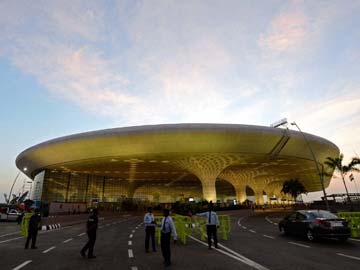 For anyone who has traveled through the shiny airport hubs of Asia like Hong Kong and Singapore, flying into Chhatrapati Shivaji International Airport here can deliver a shock.
For anyone who has traveled through the shiny airport hubs of Asia like Hong Kong and Singapore, flying into Chhatrapati Shivaji International Airport here can deliver a shock.
Visitors to India’s financial capital are greeted by worn, faded carpets, endless immigration lines and baggage carousels that slowly spit out suitcases. Departing passengers are often delayed by the unavailability of runways, and amenities, like Wi-Fi, are lacking.
For these reasons, the opening of the sleek new terminal at Mumbai’s international airport has been long awaited. Last Friday evening, Prime Minister Manmohan Singh presided over the inauguration of Terminal 2. International operations will begin Feb. 12, while domestic operations will be integrated with the terminal next year.
The new terminal, the first substantial upgrade to the Mumbai airport in nearly 30 years, cost 55 billion rupees, or $887 million. It will be able to manage 40 million passengers a year, up from 10 million passengers for the old international terminal.
Terminal 2 tries to make waiting for flights less painful by offering free Wi-Fi access in all passenger-waiting areas and giving passengers a chance to shop in 21,000 square meters, or 226,000 square feet, of retail space. Restaurants available at the airport include Domino’s Pizza, KFC, Baskin-Robbins, Coffee Bean and Tea Leaf, Mad Over Donuts and Pizza Hut.
GVK, the developer of the terminal, also promised fast processing at the airport, with a maximum wait of five minutes in check-in lines for business-class passengers and 20 minutes for economy class.
The terminal’s design, by Skidmore, Owings & Merrill, the Chicago-based architects behind the Burj Khalifa in Dubai, United Arab Emirates, was inspired by India’s national bird, the peacock. Traces of the motif are present in the towering columns and marble floor.
The terminal will also be home to the world’s largest public art program, with more than 7,000 artworks featured along a wall that’s 3.2 kilometers (2 miles) long.
Terminal 2 was built by a consortium of private companies led by GVK, which was awarded the government contract in May 2006 to redevelop the international airport.
The development was stalled for many years because of encroachments by slums on the land set aside for the airport. “Chhatrapati Shivaji International Airport has often been referred to as the most difficult airport to develop,” said GVK in an emailed statement. “This is due to the fact that the airport is located in a confined area with no space to expand.”
To overcome space constraints, the airport has been designed as a four-level X-shaped structure that will house all airlines operating international and domestic flights under one roof.
GVK rebuilt the airfield by upgrading runways and adding new taxiways to ease the congested air traffic. Only in 2011 did it start work on Terminal 2.
Many are comparing Chhatrapati Shivaji International Airport’s Terminal 2 to the Indira Gandhi International Airport’s stylish Terminal 3 in New Delhi, which was built in three years and began operations in 2010.
While Delhi’s sprawling airport has 5,123 acres of land at its disposal, it accommodates 6,777 passengers an acre, Mumbai’s international airport sits on 1,400 acres and accommodates 21,743 passengers an acre.
Mumbai’s Terminal 2 also exceeds New Delhi’s Terminal 3 in the number of check-in counters, restaurant outlets and parking spaces.
Over the last four years, airports in other Indian cities have also been expanded or refurbished. In 2008, Bangalore and Hyderabad in southern India opened new airports. Bangalore handles 13 million passengers a year, and Hyderabad 12 million. In 2013, Kolkata’s international airport opened an integrated terminal as well.
The capacity of Indian airports, however, is much less than that of other major airports in the Asia-Pacific region. While Mumbai’s Terminal 2 can handle 40 million passengers a year and New Delhi’s Terminal 3 can handle up to 34 million, Changi Airport in Singapore has an annual capacity of 70 million.
For Mumbai residents, the new terminal is a welcome change from the run-down, overloaded airport.
“After a supercharged Sunday tour of Mumbai’s T2, I say, confidently, that in comparison every other airport in the world seems banal and bland,” Anand Mahindra, chairman of Mahindra & Mahindra, said on Twitter. “For Mumbaikars, long tortured by a hellish airport, the enormous immigration and baggage spaces are like manna from heaven.”

